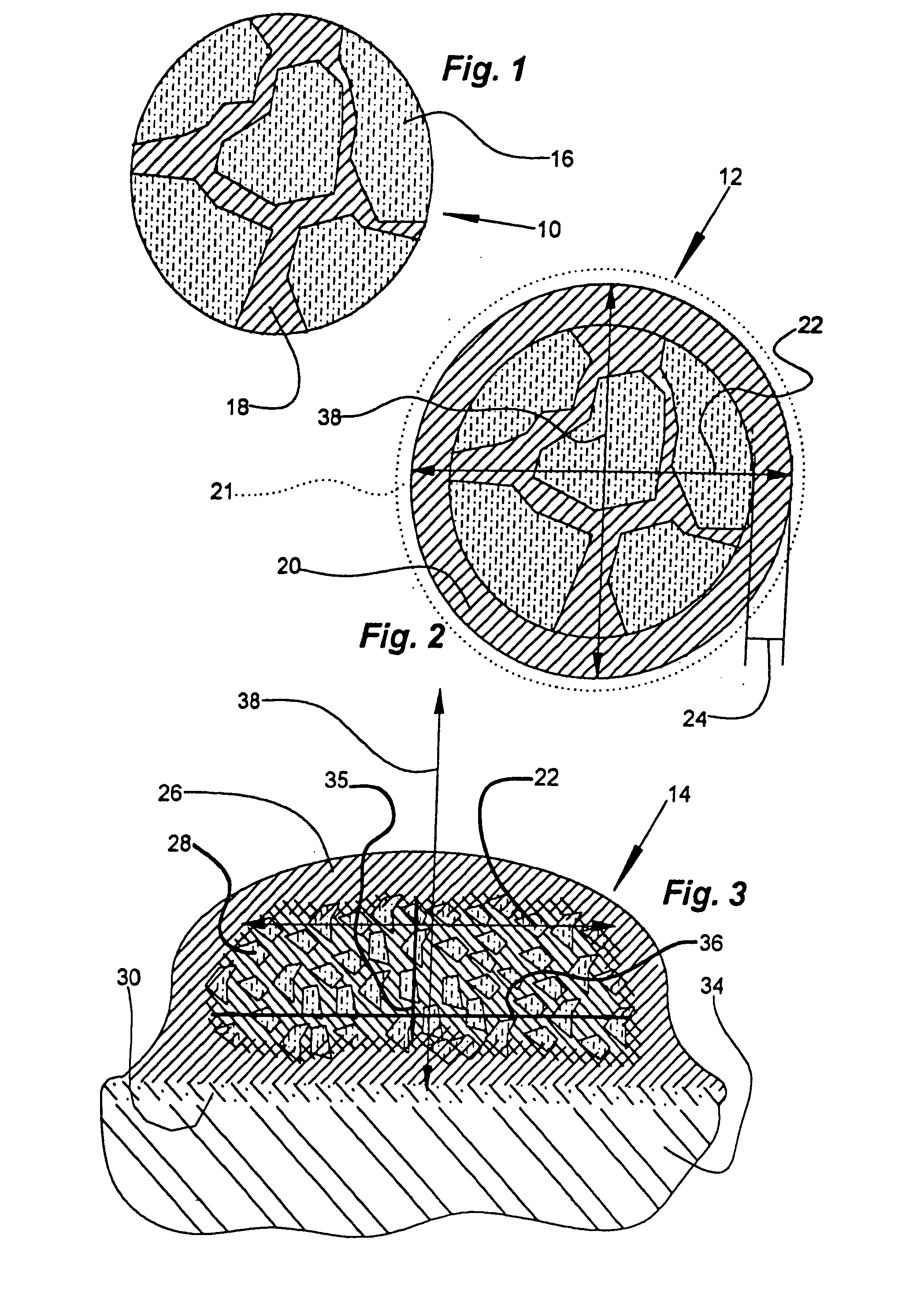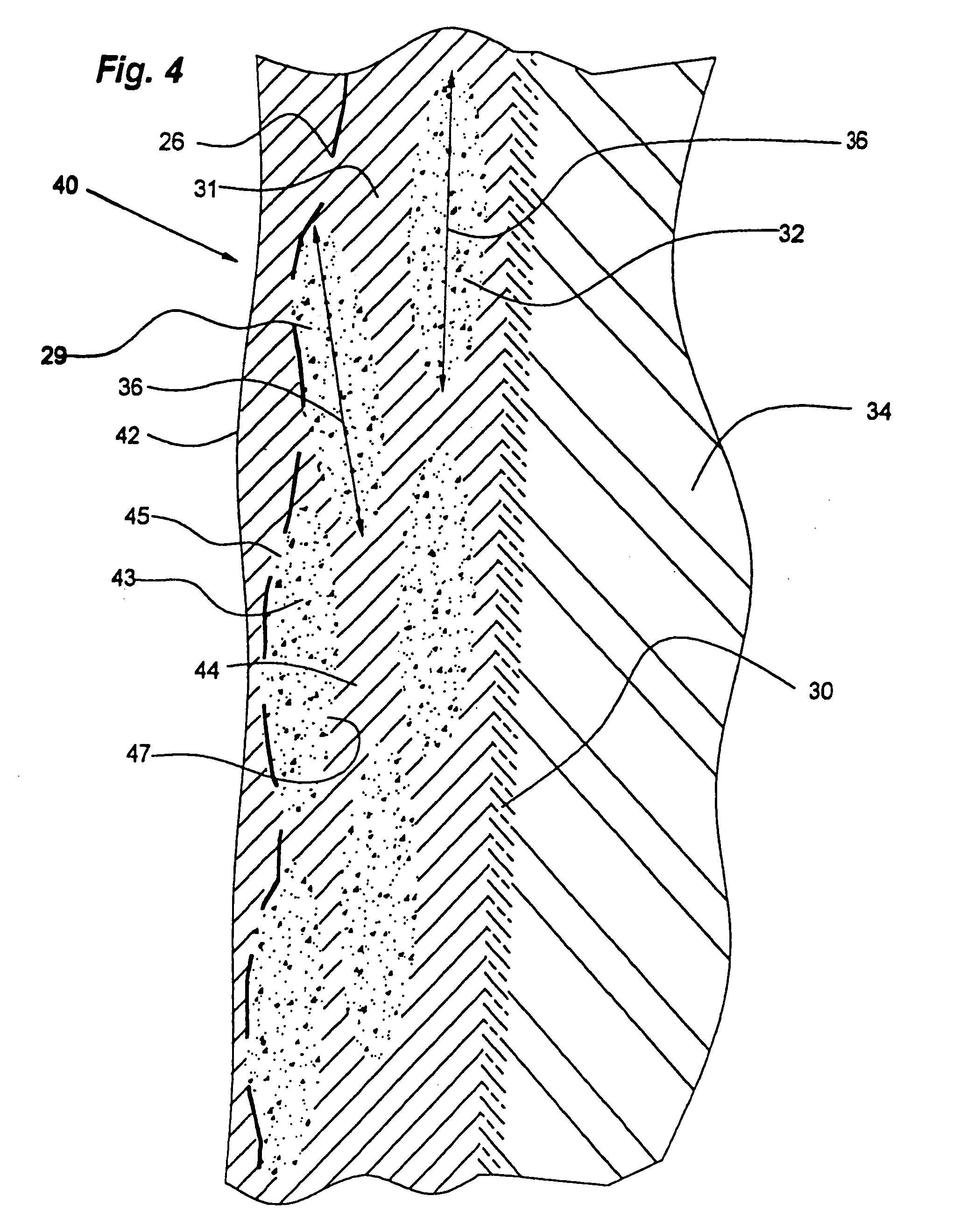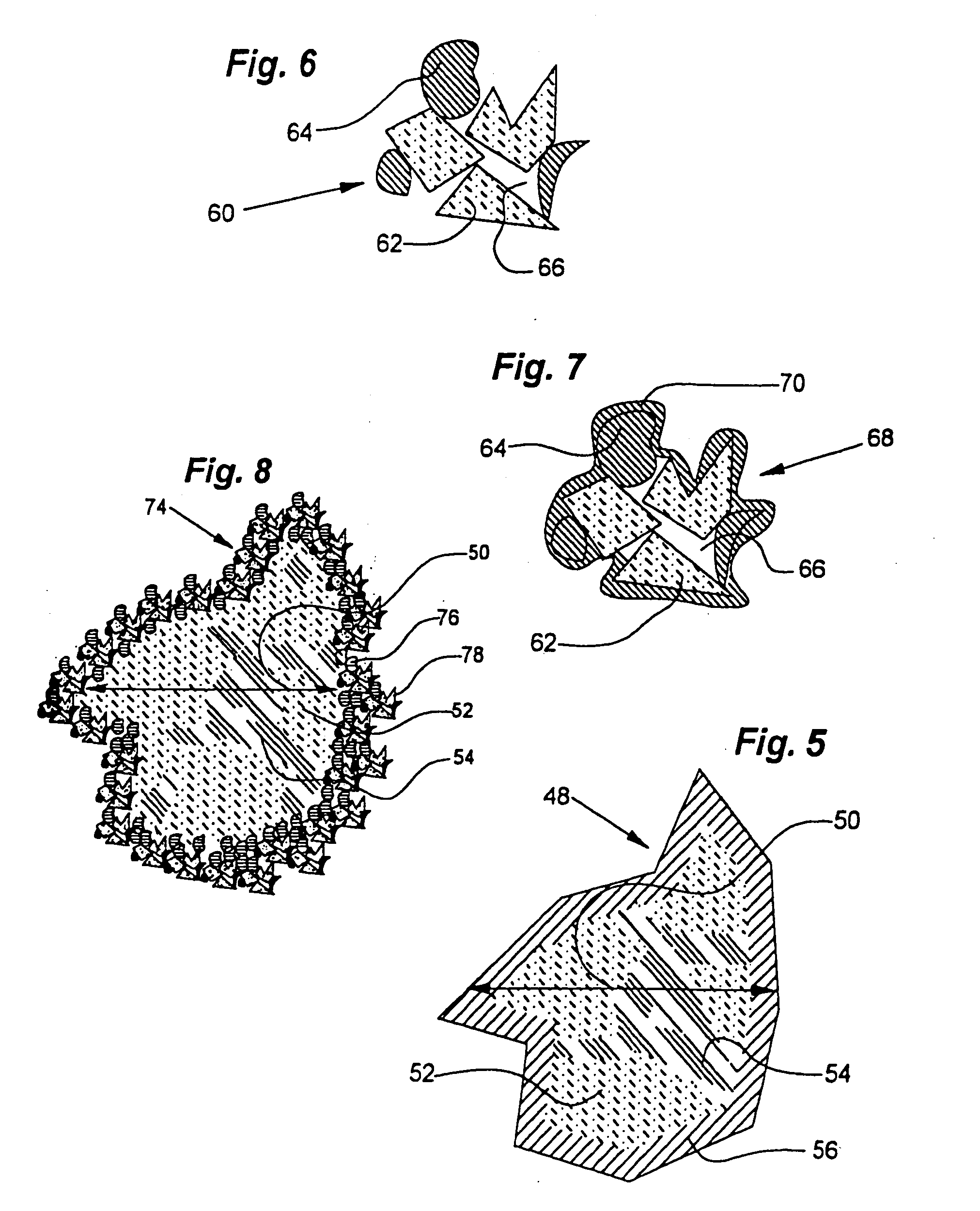Heterogeneous composite bodies with isolated lenticular shapped cermet regions
a composite body and cermet region technology, applied in the field of heterogeneous composites, can solve the problems of lenticular shape deformation, and achieve the effect of reducing the detectable size of the cermet region and sufficient hea
- Summary
- Abstract
- Description
- Claims
- Application Information
AI Technical Summary
Benefits of technology
Problems solved by technology
Method used
Image
Examples
Embodiment Construction
[0064] Referring now to the drawings wherein like reference numerals designate identical or corresponding parts throughout the several views, there is illustrated generally at 10 (FIG. 1) a core particle which has been spherodized. The core particle 10 is a ceramic rich composite ceramic-metallic particle that is composed of ceramic particles 16 bonded together by a ductile metallic binder 18. Typically, there are a great many more ceramic particles in a single core particle 10. The number of ceramic particles is limited here so as to permit clear illustration of the components of the core particle. There is illustrated generally at 12 (FIG. 2) a complex composite particle wherein the core particle 10 is coated with a substantially uniform coating 20 composed of metal rich ductile metal matrix precursor. The thickness 24 of the coating 20 is sufficient to provide the desired amount of spacing between cermet regions in a heterogeneous body formed from a cermet powder composed of comp...
PUM
| Property | Measurement | Unit |
|---|---|---|
| Fraction | aaaaa | aaaaa |
| Length | aaaaa | aaaaa |
| Percent by volume | aaaaa | aaaaa |
Abstract
Description
Claims
Application Information
 Login to View More
Login to View More - R&D
- Intellectual Property
- Life Sciences
- Materials
- Tech Scout
- Unparalleled Data Quality
- Higher Quality Content
- 60% Fewer Hallucinations
Browse by: Latest US Patents, China's latest patents, Technical Efficacy Thesaurus, Application Domain, Technology Topic, Popular Technical Reports.
© 2025 PatSnap. All rights reserved.Legal|Privacy policy|Modern Slavery Act Transparency Statement|Sitemap|About US| Contact US: help@patsnap.com



